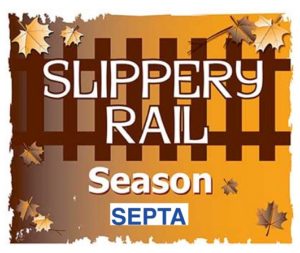
As you’re looking out your train window admiring autumn’s vivid leaf colors, SEPTA personnel are also closely watching. While we all appreciate the beauty of the season, SEPTA is more concerned about the effect of falling leaves on track conditions. Every year, SEPTA posts information at Regional Rail stations about “Slippery Rail” to remind customers about this annual occurrence and the measures we take to combat it.
What is Slippery Rail?
Slippery Rail is a condition that occurs when falling leaves, crushed by passing vehicles, deposit a residue on the tracks. This coating decreases the friction of a train’s wheels creating slippery rails. When this happens, travel speeds are reduced to maintain safe operations, especially on inclines and declines and when vehicles approach the station platform.
How does SEPTA tackle Slippery Rail?
SEPTA has an aggressive maintenance program that employs a combination of water, gel, and sand to remove oily deposits on the tracks. The Authority also uses high pressure washing equipment on Regional Rail to blast away the leaves and leaf residue. This action is effective in removing debris from the tracks, but short of plucking every leaf from every tree, customers may still experience intermittent service delays caused by slippery rail.
How long does Slippery Rail season last?
The length of slippery rail season depends on fall weather conditions and the quirks of Mother Nature. But until the weather turns frosty and all the leaves have fallen, SEPTA maintains a consistent program of cleaning and removal.
Rider Tips
Getting you to your destination without delays or inconvenience is very important, but ensuring that your trip is safe, always takes precedence. So please allow some extra time to complete your trip and be alert if slippery rail causes trains to slide past selected stations.





